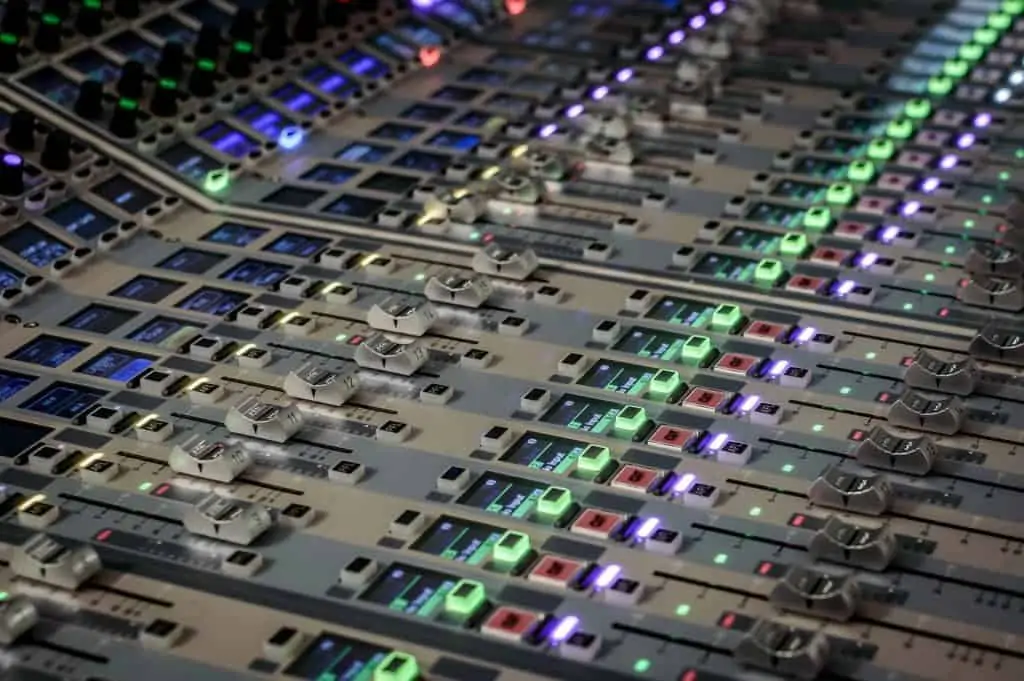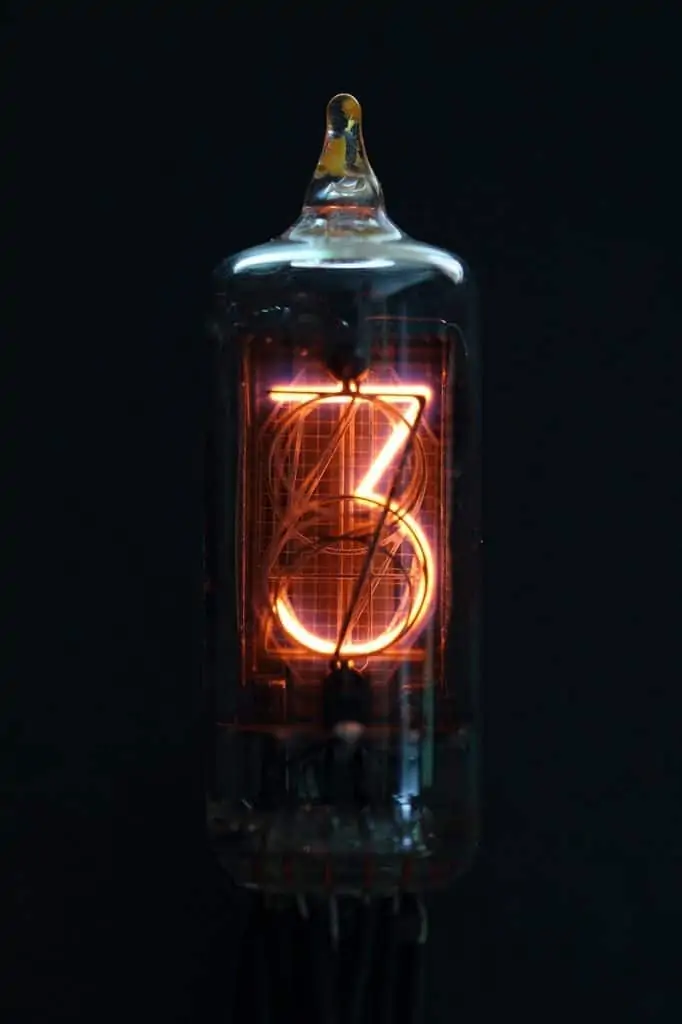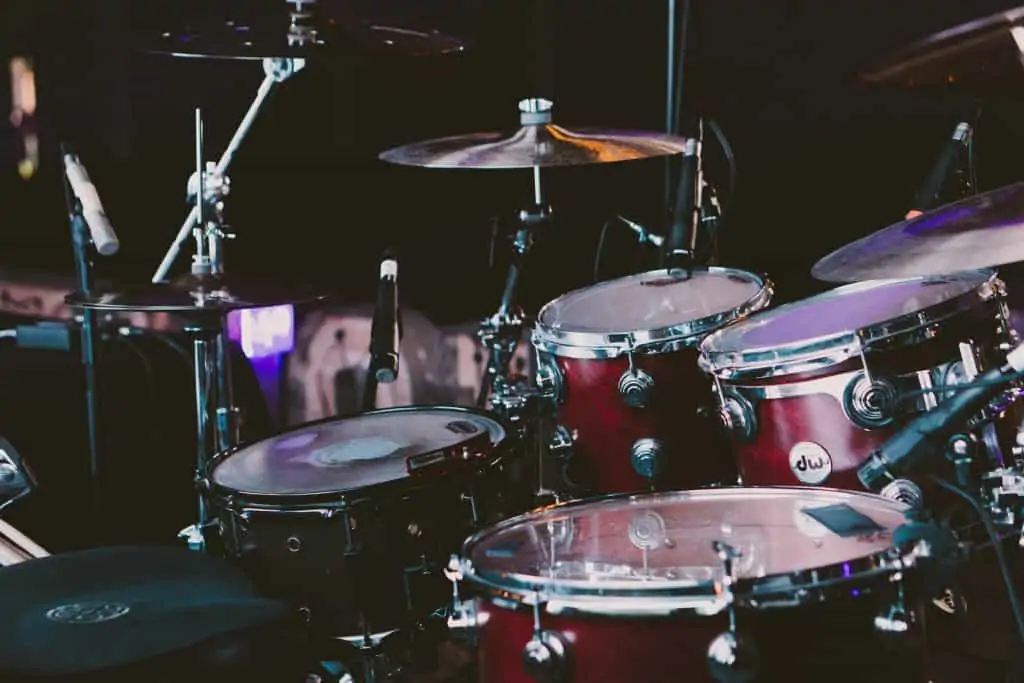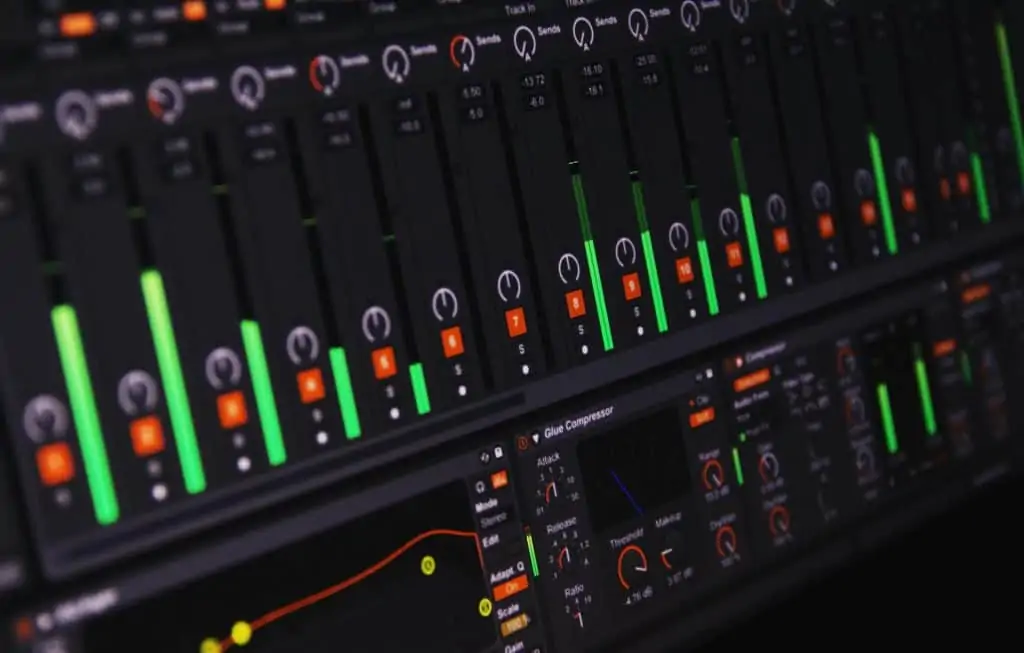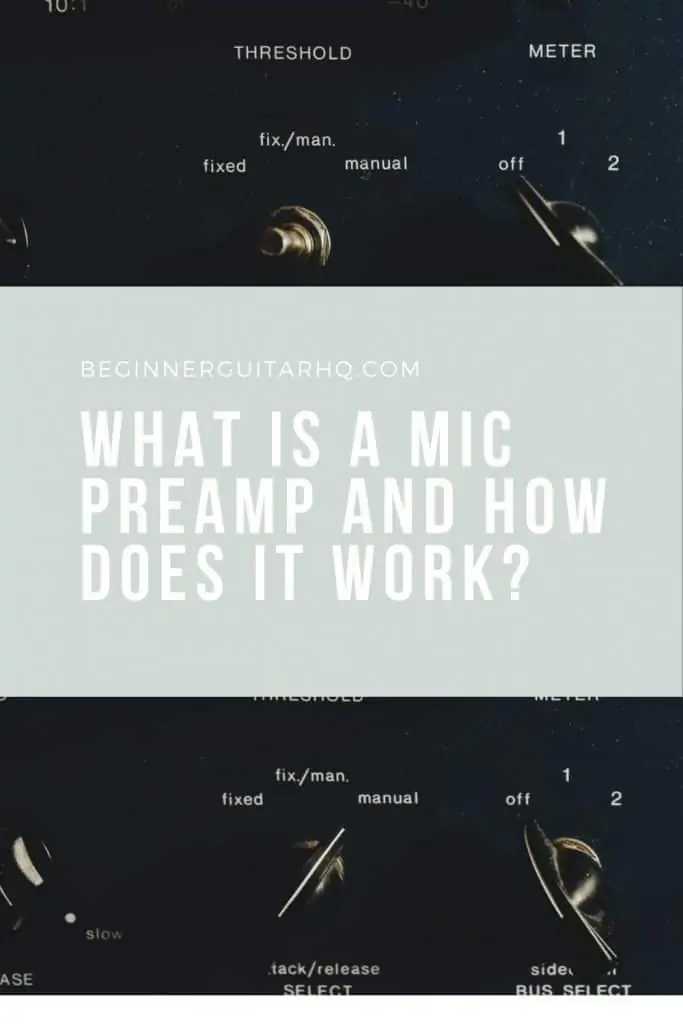If you’re diving headfirst into the world of recording and professional audio production, you’ll be realizing pretty quickly that the learning curve is steep.
There’s just so much tech involved that doesn’t exist in any other circles, and it can be pretty tough to get your head around it all, especially if your musical and technological experience is fairly limited.
One such piece of recording tech is the microphone preamplifier, or mic preamp for short.
Perhaps what makes these little devices so difficult to understand is that everything goes on inside a shiny metal box.
There are no moving parts to see and help you understand what’s going on, so it can seem like a bit of black magic sometimes.
So, we’re here to explain exactly what’s going on inside these mystery boxes, and how to choose the perfect mic preamp for your purpose.
There’s no wizardry going on, either, so don’t stress.
There will be no foolish wand-waving or silly incantations in this class.
Contents
What Is A Mic Preamp?
A mic preamp is a device that takes the output of a microphone (low in terms of nominal level) and amplifies it to line-level, a standard used by pretty much all professional audio gear.
How Do Mic Preamps Work?
Let’s start with a little lesson in electronics:
Not all signals are created equal.
There are a few different kinds of electrical signals (not to be confused with cables and connectors, which don’t necessarily correlate to the type of signal), and a mic preamp basically turns a mic level signal to a line-level one.
A mic level signal is what comes out of the end of your mic (obviously) and typically ranges from -60 dBV to -20 dBV.
Line level signals, however, operate at a nominal level of +4dBu (1.78 dBV), which is quite a bit higher.
As line level is the professional standard used by all recording and mixing gear, we need a device to turn up the output of the mic so we can use it in the home studio.
Hence, the mic preamp!
Where Are Mic Preamps Found?
One of the difficulties in understanding what the mic preamp is all about is understanding that they can be found as standalone units, or as a single component of a larger device.
For example, pretty much every mixing desk on earth has a number of mic preamps, one for each channel on the desk.
You’ll also find mic preamps in audio interfaces like Focusrite Scarlett 2i2. Interfaces that don’t have a mic preamp built-in tend to be referred to as analog to digital converters, as opposed to full-blown interfaces.
Another common piece of tech where preamps are employed is in field recorders, like the Zoom H6.
Source: https://unsplash.com/photos/3553NJXZrrE
Of course, then you’ve got your standalone mic preamp units, which are where the real fun starts.
These handy little devices can be plugged in front of your audio interface or mixing board, and provide you with a variety of different tonal options for shaping the sound of whatever you’re recording.
From here on out, we’re going to be talking about this kind of mic preamp.
Before we get into which preamps we recommend, let’s take a look at the key features found in such devices, so you know what you’re looking at.
How To Choose A Mic Preamp
Remember how we said not all signals are created equal?
Well, neither are mic preamps.
So, if you’re gonna be prepared to pick the right unit for your needs, you better know your rack units from your 500 series.
Let’s take a look.
Inputs and Outputs
The first thing to check out when deciding on a new mic preamp is what kind of inputs and outputs it has.
Obviously, all preamps have at least one XLR mic input. I mean, that’s kind of the point.
You’ll also find at least one line-level output. Again, the whole idea.
However, there are a few other kinds of inputs you’ll find:
- Hi-Z: also known as instrument input, or DI. These inputs have high-impedance and are designed to accommodate plugging in a bass or electric guitar directly.
- Line: some preamps have line inputs as well. These allow you to connect instruments such as analog synthesizers.
- ADAT: This is a digital protocol, and allows preamps to receive digital inputs from other preamps.
Output-wise, you might also find:
- XLR: For connecting to other gear.
- ADAT: Digital output to connect to other audio gear.
- USB: If the preamp has converters, then it might have a USB output to connect directly to your computer.
Tonal Palette
A huge reason for collecting a bunch of different mic preamps is because they all sound different.
It’s kind of the same idea as having a bunch of different mics, or for guitar players, collecting different amps.
Some preamps are designed to be as transparent as possible. That means they do the job of amplifying the mic output, and nothing else.
That sounds a bit boring to me, to be honest, which is why I tend to opt for a more colored preamp.
One of the most revered preamps of all time is the Neve 1073, known for its juicy, vintage sound.
Tube vs Solid State
Guitar players like myself will be familiar with the age-old tube vs solid-state amp debate.
The same goes for mic preamps.
The technology that is employed inside the box to amplify the mic signal is either a vacuum tube or a solid-state transistor.
Neither is better than the other; they just offer different sound palettes.
On the whole, tube preamps are more, well, tubey. They offer the vintage, overly saturated sound when you crank them right up.
Solid-state preamps have a tendency to be cleaner and clearer, but they can still exude a bunch of character.
Form Factor
Just like the internals of a mic preamp differ, so too do the externals.
As a general rule, mic preamps come in three different shapes and sizes:
- Rackmount: Housed inside a standard 19” rackmount.
- Desktop: Standalone units.
- 500-series: AKA lunchbox, these are small, vertically-oriented units, which need to be mounted in a desktop or rack-mounted chassis.
The choice of form factor is essentially a decision based on the functionality you’re looking for.
Channels
Some preamp units are designed to take care of just a single microphone input, whereas others can take 4 or even 8 inputs at once.
This is known as the number of channels that the preamp unit has.
The decision you need to make will be based on how many microphones you’re going to be plugging in.
If you only ever plan on recording one mic at a time, or you’re just adding an interesting bit of color to an existing setup, then a single-channel preamp should suffice.
If, on the other hand, you need to record a whole drum kit using the same tonal palette, then you should consider grabbing an 8-channel mic preamp.
Other Features
Aside from your regular input, output, and gain control, mic preamps may (or may not) offer a variety of other features.
As always, whether you need them or not is going to depend entirely on your intended purpose.
High-Pass Filter
A common feature found on mic preamps is the ability to filter out any low frequencies.
This is helpful when recording instruments such as voice or electric guitar, where there isn’t a lot going on down in that region.
The exact frequency where the bass roll-off begins will differ from unit to unit, but it’s usually somewhere between 80Hz and 160Hz.
Phase Reverse
This feature flips the polarity of your mic signal. It’s helpful when recording with two or more mics simultaneously so you can ensure all of the signals are in phase.
48V Phantom Power
Basically, all mic preamps have these features these days.
Phantom power is necessary to power condenser microphones, a popular choice of mic.
Though it’s pretty much a standard feature, you should still make sure the mic preamp you’re looking at buying has it if you have a condenser mic, especially when looking at older, more vintage gear.
<iframe width=”560″ height=”315″ src=”https://www.youtube.com/embed/rt8E7WGvdiA” frameborder=”0″ allow=”accelerometer; autoplay; clipboard-write; encrypted-media; gyroscope; picture-in-picture” allowfullscreen></iframe>
Pad
On occasion, the signal at the input of the mic overloads a microphone preamp, even at the lowest possible amount of gain.
To get around this, you need some form of attenuation, known as a pad.
You might find this on the mic itself, or on the preamp. Or both.
Channel Strips
Some mic preamps incorporate features such as equalization or compression, and these are typically described as channel strips.
The name comes from mixing desks, which have a number of channel strips that are generally comprised of mic preamps, equalization, and sometimes compression, or inserts for other analog gear.
Since mixing desks are a lot less common than they used to be (thanks to DAWs taking over), these cool little units have been developed to give you an entire analog world in one little box.
You can use them to manipulate audio on the way in (while you’re recording) or connect them to your audio interface for some post-processing analog goodness.
Why Choose An External Mic Preamp?
If you’re already working with a mixing desk or audio interface that has preamps built in, then you might be wondering if there’s really any point in investing in external preamps.
The answer is, as always, it depends.
Do you need to buy external mic preamps?
No.
Plain and simple. If you’ve got a preamp in your interface, then your mic should work just fine.
However, the preamps in most interfaces are designed to be as clean and as transparent as possible.
For some, that’s desirable, as you don’t want your preamps adding any color to your instrument and mic selection.
In other cases, though, a bit of analog color can go a long way to giving your recordings a nice bit of flavor and flair.
So, external mic preamps should be viewed as tools to add color and interest to your recordings, kind of like using different guitar pedals in front of your amp to achieve various tones and feels.
8 Of The Best Mic Preamps Around
dbx 286S
First on our list is the 286S by dbx.
This is a classic single-channel mic preamp in 19” rack mount format.
Actually, it’s a full-blown channel strip, but more on that soon.
The preamp in the 286S is nice and clean, so it doesn’t offer a lot of color variation, but it does give you an upfront sound and decent 60dB of gain.
The 4-LED level indicator makes life simple: get to yellow sometimes, don’t hit red. Easy.
Next to that is a 48V phantom power switch and an 80Hz high-pass filter for getting rid of those rumbly lows.
Where the 286S really shines, though, is it’s functions that lie in the dynamic-field.
As a brand, dbx is well-known for it’s compression, and the 286S delivers on this in spades.
You get dbx’s famous OverEasy compressor with drive and density controls that deliver that desirable ‘in your face’ vocal sound that propelled dbx into the spotlight.
That’s not all though.
An expander/gate allows you to cut the noise floor out, and an intuitive de-esser helps to keep sibilance at bay.
Then (yes, more!), you get both low and high-frequency exciters to really amp up both ends of the spectrum.
The high-end exciter is especially nice on vocals, making the dbx 286S the ideal channel strip for singers.
Focusrite ISA ONE
You’ll probably know Focusrite for their excellent range of budget-friendly, yet capable audio interfaces, such as the Scarlett 2i2.
But what you probably didn’t know is that they came up building full-scale outboard studio equipment. One such piece of gear was the ISA 110, a mic preamp built by Rupert Neve himself.
The ISA ONE is based on the original topology of the 110, bringing this revered tech into desktop format and adding a few other handy features, making this a portable channel strip for the modern recording artist.
The first thing you’ll see on the face of the ISA ONE is that old-school VU meter, which is more than a little mesmerizing to look at, it’s actually incredibly accommodating for monitoring input gain.
The sound of the preamp is forward, but not overly aggressive, with a definite character that is natural yet flattering. It’s not oozing with transformery or tubey goodness, but we’ve got some units coming soon that off that sound.
An interesting aspect of the ISA ONE is the variable impedance, which allows you to dial in the kind of response you’re looking for. I’d probably just leave it on the ISA 110 mode, to be honest. I mean, that’s why you’re buying it, right?
It offers a significant amount of preamp gain (60dB, which can be switched down to 30dB to accommodate louder signals with more finesse), and a handful of other features on the input, including:
- High-pass filter
- 48V phantom power
- Phase flip
The input/output offering on the ISA ONE is pretty unique, too.
On the input front, you’ve got both mic and line inputs, with the line input coming in on either an XLR or a TS jack, as well as a Hi-Z instrument input on the front panel.
Not only that, but the rear panel allows for a stereo cue input, so you can overdub vocal tracks while hearing your backing track.
Such playback is made possible with a stereo headphone output on the front panel.
The output of the ISA ONE comes in the form of a male XLR port, or you can opt for a model with a built-in digital card, which takes care of analog to digital conversion and allows you to connect to the likes of an ADAT port on your interface.
Overall, this is an incredibly capable mic preamp, made even cooler by the interesting form factor and nifty little handle on top!
Golden Age Project Pre-73 MKIII
Perhaps the most famous preamp of all time, at least when it comes to super colorful units, is Neve’s 1073.
The problem is, it’s hella expensive, even if you’re grabbing a clone from high-level manufacturers like BAE or Great River.
At least, this was the case, until Golden Age Project (GAP as the will henceforth be referred to) dropped the Pre-73, a low-cost but professional-sounding clone of the famous solid state preamp.
We’re now three iterations into the revolution (hence the MKIII), and things are sounding better than ever.
The Pre-73 offers a tonal palette that is warm, punchy, and full of character, thanks to a balanced transformer design.
Honestly, at the price of the Pre-73, it would be enough to just leave it at that, but GAP don’t do things by halves.
Oh, except for sizes, with the preamp units being a compact half rack-unit design, meaning you can fit two of them horizontally in a 19” studio rack.
So, what else makes the Pre-73 damn awesome?
How’s 80dB of gain sound?
Seriously, 80dB. That’s 4x as much gain as most preamps offerings, sitting around 60dB. This makes it an ideal preamp for mics like the SM7B, or for vintage ribbon microphones.
You get a low-impedance mode for a different response, and inputs for mic, line, and instruments too.
Standard preamp features like 48V and phase reverse are present, as are two switchable high-pass filters.
Not so standard though is the switchable AIR modes (of which there are two), which give you access to +3dB and +6dB high-frequency boosts for some airy goodness.
I can’t recommend this mic preamp enough if you’re looking to add a tonne of flair and color to your setup.
Pair it with the EQ-73 to get the full Neve experience, and you’re away!
Warm Audio WA12
The WA12 is yet another clone of a famous preamp model, this the time, the legendary 312 unit from API.
The 312 is renowned for being fast, dynamic, and having excellent transient response, making it a solid option for percussive instruments and drum kits.
The WA12 is no different, and though many of the internal components differ (mostly as a result of the original parts no longer being manufactured), the WA12 does an excellent job of recreating this famous sound.
So, what’s going on in the WA12?
You get a massive 71dB of gain from a dual-transformer preamp, with very little self-noise and a whole lot of headroom.
You get an XLR mic input on the rear and a Hi-Z instrument input on the front so you can connect your electric guitar directly, as well as 48V phantom power, a polarity reversal button, and a 20dB pad switch for loud sound sources.
Add to that the WA12’s tone switch, which dials the input impedance up or down, and you’ve got a serious amount of tone shaping available from this box.
Like the Pre-73, it fits neatly in a half rack-unit mount, so why not grab one of each?
Universal Audio SOLO/610
This one is for all of my guitar players out there that love their tube amps.
Yeah, I know, solid state amps can be pretty nice as well (I love me a Jazz Chorus), but there’s just something about that tube breakup which gets us going, right?
That’s why many audio engineers love the sound of Universal Audio’s legendary 610A preamp.
Like most world-renowned preamps, the 610 was originally employed in a studio mixing desk. This guy was used on famous records from Johnny Cash and The Beach Boys, so there’s plenty to be desired.
The SOLO/610 from UA takes Bill Putnam’s legendary brushed steel, big knob design into the desktop world, offering that oozey tubey sound in a lunchbox-esque package.
It’s a simple two-knob design, one for the input gain, and one for the output. This allows you to crank the hell out of the input gain and drive the vacuum tube, without overdriving the input of your converters.
On the input front, you can plug in a mic or line input, or connect a guitar or bass directly while switching in the 610’s DI mode.
Two impedance modes give you access to different tonalities, as does a low-cut filter which drops out some of the low end.
That’s really all you need to know about the SOLO/610! Rich, vintage tones right at your fingertips. Beautiful.
Avalon VT-737SP
If money is no object, then I would hands down be grabbing one of these bad boys.
For sure, they aren’t cheap, but boy do they sound good.
The VT-737SP is a single-channel mic preamp and channel strip, offering that classic vacuum tube sound and a tonne of flexibility.
Let’s take a look at the front panel from left to right.
The first thing you’ll notice is a gain dial (which can be boosted up even further using the high gain switch) and a high impedance instrument input for plugging in your guitar.
Okay, cool, looking pretty standard so far.
Then you’ve got a knob to switch between line and mic inputs, and to dial in the cut-off frequency for the high-pass filter.
This is switchable using a button just to the right.
Then you’ve got two more switches for phantom power and phase reverse.
Then stuff gets fun, as the next section offers an absolutely stunning compressor module.
The compressor offers pretty standard controls: ratio, threshold, attack, and release, and it allows you to keep vocal performances in check on the way in.
You can monitor the gain reduction using the VU meter in the center of the channel strip, which can also be set to show you the input gain, depending on your preference.
On the other side of the rack unit (the VT-737SP is a 2RU 19” rack-mounted box) are the controls for the preamp’s EQ section, which can be switched to sit before or after the compressor.
You get bass, low-mid, high-mid, and treble controls, with both frequency selector and boost/dip knobs, as well as hi-Q switches which are awesome for dialling in a sharp cut. For example, if you’re recording high-gain electric guitars, you might want to dial out a bit of 4kHz.
Then, you’ve got an output dial.
This, like the SOLO/610, let’s you crank the input gain up and take advantage of the tube, and then roll back the output gain a little.
Overall, this is a serious bit of kit which essentially allows you to create a fully-processed guitar or vocal sound right at the point of recording.
Solid State Logic Alpha VHD
If you’re new to the recording game, you might not have heard of Solid State Logic.
If, however, you’ve spent just a few months researching the best of the best in audio equipment, then you’ll be intimately familiar with SSL.
They’re famous for their large-format mixing consoles, loved by engineers like Chris Lord Alge.
The SSL Alpha VHD brings their XLogic preamp tech into the portable world, offering a 19” rack unit with 4 mic inputs.
Each channel has both an XLR and a Hi-Z instrument input, as well as 48V phantom power and a switchable pad.
Input and output controls are ideal for cranking up the gain without overloading the input of your analog to digital converters, but the real magic lies in the third knob on the Alpha VHD: the VHD control.
VHD standards for Variable Harmonic Drive, which introduces either 2nd or 3rd harmonic distortion (or a blend of both) to deliver a little warmth and edge to your recordings.
I wouldn’t drive this control too heavily, unless you’re looking for a super distorted sound, but keeping it on the low end will certainly give you a bit of extra analog goodness, which is exactly why you should be searching for an external preamp unit in the first place!
Manley VoxBox
Last but not least on my list of epic mic preamps is the Manley VoxBox.
It’s a tube channel strip, and it sounds amazing on vocals (hence the name).
The VoxBox is a bit of a beast on the size front, taking up three rack unit spaces despite only offering on mic input, but it’s worth it.
The gain control on this unit is interesting, you switch the input gain up in increments of 5dB, and then use a separate knob to dial in the finer side of things.
You’ll find a few standard features on the VoxBox, such as a phase flip, low-cut filter, and phantom power, but it’s everything after these that makes the preamp really shine.
First up is the compressor module.
It’s got a fixed ratio of 3:1, so you can’t absolutely slam the input, but you can get a decent amount of gain reduction if you need to, and since it’s aimed at vocal production, it should be enough compression for most signals.
Next up is a de-esser with switchable frequency (perfect for getting rid of unwanted S sounds in speech and singing) and a comprehensive EQ section that really allows you to dial in the perfect vocal tone on the way in.
Each of the three EQ peaks gives you an insane number of frequencies to pick from, so once you get proficient at using the VoxBox, you should pretty much be able to dial in a vocal tone on the way in and have to do relatively little post-production when it comes to mixing.
The preamp even has an insert point which allows you to hook up other analog gear (like an exciter or a reverb unit), so you can really use this as an all in-one, pre-DAW recording chain.
If you are lucky enough to be able to afford one, I would highly recommend it.
Or, for those of you with super deep pockets, grab two and link them together via the stereo link controls on the rear panel.
Conclusion
Though you could spend weeks or even months poring over preamps online, checking out videos on YouTube of how they sound, and reading reviews written by your favorite audio engineers, there really is no substitute for experience.
So, dive in headfirst, grab a couple of preamps that sound like you, and have fun learning by listening!

